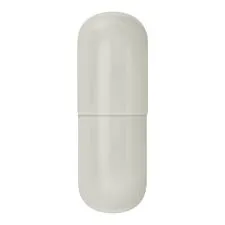
ag. . 21, 2024 10:29 Back to list
Exploring Various Grades of HPMC and Their Applications in Different Industries
Understanding Different Grades of HPMC (Hydroxypropyl Methylcellulose)
Hydroxypropyl Methylcellulose (HPMC) is a cellulose derivative that has gained significant traction in various industries, including pharmaceuticals, food products, and construction materials. The diverse range of applications stems from its unique properties, which are influenced by the specific grades of HPMC available on the market. Understanding these different grades is crucial for selecting the right type for a given application.
Understanding Different Grades of HPMC (Hydroxypropyl Methylcellulose)
The grades of HPMC can usually be classified based on their viscosity. Viscosity is a critical factor affecting the performance of HPMC in formulations. Low-viscosity grades (like HPMC K4M or K15M) are often used in applications requiring rapid solubility and easy dispersibility. These grades are ideal for tableting excipients, where they assist in binding and controlling the release of active ingredients. On the other hand, high-viscosity grades (such as HPMC K100M) are used in applications that require a thicker consistency, such as gel production, where they serve to stabilize the formulation and enhance texture.
different grades of hpmc

In the pharmaceutical industry, different grades of HPMC play pivotal roles in drug formulation. The selection of HPMC grade can influence drug release profiles, stability, and bioavailability. For instance, sustained-release formulations often utilize high-viscosity HPMC grades, which provide a controlled release of the active pharmaceutical ingredient (API) over an extended period. Conversely, immediate-release formulations may use lower viscosity grades to ensure that the drug is released rapidly upon ingestion.
Beyond pharmaceuticals, HPMC is extensively utilized in the food industry. Food-grade HPMC serves as a thickening agent, emulsifier, and stabilizer in various products, including sauces, dressings, and baked goods. The choice of HPMC grade can affect mouthfeel, texture, and overall product stability. For example, a higher viscosity grade might be selected to provide a creamier texture in sauces, while a lower viscosity grade could be ideal for beverages, where clarity and smoothness are desired.
Additionally, the construction industry has adopted HPMC for its binding and water-retention properties. In cement-based applications, HPMC improves workability, adhesion, and reduces crack formation. The choice of HPMC grade in this context can significantly influence the performance of mortars, plasters, and tile adhesives, where consistent viscosity and water retention are essential for optimal application.
In conclusion, the myriad grades of HPMC available offer a range of functional properties that are crucial to various industrial applications. The choice of HPMC grade, determined by its viscosity, degree of substitution, and molecular weight, plays a vital role in the performance of products across pharmaceuticals, food, and construction sectors. As the industry continues to evolve, understanding the nuances of HPMC grades will remain integral for manufacturers seeking to optimize their formulations and meet the demands of consumers effectively. Whether you are a formulator, manufacturer, or end-user, being informed about the specifications and potential applications of different HPMC grades can lead to improved product quality and performance.
-
Unlocking the Benefits of HPMC Products: A Gateway to Versatile Applications
NewsAug.07,2025
-
Unleashing the Potential of HPMC Ashland: A Comprehensive Look
NewsAug.07,2025
-
Tile Bonding Cellulose: The Key to Superior Adhesion and Durability
NewsAug.07,2025
-
Hydroxypropyl Methylcellulose Powder: The Versatile Component in Modern Pharmaceuticals
NewsAug.07,2025
-
Hydroxyethyl Cellulose: The Versatile Solution for Various Industries
NewsAug.07,2025
-
Hydroxyethyl Cellulose (HEC): The Versatile Polymer for Various Applications
NewsAug.07,2025







